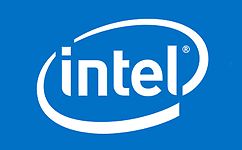英特尔公司(INTC.US)2025年第一季度业绩电话会
文章语言:
简
繁
EN
Share
Minutes
原文
会议摘要
Intel reported strong Q1 2025 earnings, driven by Raptor Lake products and Meteor Lake cost improvements. New CEO emphasizes cultural and operational reforms, including leadership restructuring and a four-day workweek. The company plans to reduce Opex to $17 billion in 2025 and $16 billion in 2026, and lower CapEx to $18 billion in 2025. Strategic focus shifts towards AI platforms and rebuilding engineering talent. Revenue modeling faces uncertainty due to market conditions, while NCI is projected to grow significantly by 2026. Organizational restructuring aims to innovate faster and serve customers better, with gross margin dynamics expected to improve in 2026.
会议速览
The CEO discusses the need for cultural transformation and operational simplification within Intel to enhance innovation and agility, announcing measures including leadership restructuring, cost reductions, and a return-to-office policy.
The speaker emphasizes refocusing on developing best-in-class products, refining AI strategy, building trust with foundry customers, and strengthening the balance sheet. Key priorities include optimizing products for AI workloads, taking an integrated system approach for enterprise AI solutions, enhancing customer service in the foundry business, and prudent capital management to improve financial performance.
Intel reported Q1 2025 revenues of $12.7 billion, with strong performances in Intel products and Intel Foundry services, despite economic uncertainties and competitive pressures. The company saw higher-than-expected demand for Raptor Lake and improved Meteor Lake costs, contributing to a non-GAAP gross margin of 39.2%. Intel Products revenue reached $11.8 billion, while Intel Foundry services revenue increased by 8% sequentially. The company also noted prudent management strategies amid shifting trade policies, inflation, and regulatory risks.
The company has announced the sale of a 50% stake in Alra to Silver Lake Partners for a valuation of nearly $9 billion, expecting the remaining stake's value to grow. Due to fluid trade policies and regulatory risks, the forecast for Q2 and the year becomes challenging, with anticipated costs increase and potential TAM contraction. Guidance for Q2 includes a wider than usual revenue range, declines in specific segments, and impacts from lower wafer and advanced packaging volume. Full-year guidance advises caution due to market uncertainties and tight supply on older nodes.
Intel is simplifying its organizational structure to innovate faster and better serve customers, leading to reduced operational expenses and capital investment. Key focus areas include portfolio refocusing, organizational complexity elimination, engineering function transformation, and enhanced efficiency. The company aims to deleverage its balance sheet, with lower Opex and CapEx targets and optimized use of non-core assets.
The speaker discusses the impact of strategic changes, including cost cutting and lower CapEx, on gross margins for 2025 and 2026. They mention the shift to Lunar Lake affecting margins negatively due to memory and packaging costs, and startup costs associated with ramping up in Arizona. However, they anticipate improved margins in 2026 with the ramping of Panther Lake and the reintroduction of wafers into the fabs, providing margin stacking benefits.
The speaker discusses the potential impact of tariffs on their business, noting the uncertainty and potential for a choppy year ahead. They highlight the company's global supply chain and ability to mitigate headwinds, though optimization will take time.
The discussion focuses on clarifying Intel's gross margin figures for March, noting the positive impact of higher revenue and volume from Raptor Lake. There's also an update on the Intel Foundry Services strategy, emphasizing the priority on ramping internal customers and building trust with foundry clients, with a focus on yield, reliability, and customer-specific optimization.
The speaker discusses Intel's focus on improving product execution, highlighting the progress and competitive positioning of Panther Lake and Clearwater Forest. They address constraints in 7nm production due to better performance on Raptor Lake and Intel 7 parts, leading to capacity limitations. Additionally, they note the impact of macroeconomic concerns on consumer demand for older technology nodes versus the commercial segment's demand for AIPC products, emphasizing the company's commitment to investing in long-term growth segments despite current challenges.
The discussion highlights a tech company's AI strategy focusing on emerging workloads like reasoning models and physical AI, emphasizing partnerships and purpose-built silicon and software. Additionally, it addresses operational expenses, aiming for a leaner, more efficient company structure, with plans to scrutinize spending and potentially realize additional savings beyond headcount reductions.
The company experienced higher than expected growth in Q1 driven by several hyperscalers and remains optimistic for the rest of the year with new product launches. However, macro concerns persist, and there's a focus on stabilizing market segment share and improving margins. Regarding capital expenditure, the goal is to operate at an $18 billion number in 25, leveraging assets under construction to drive better returns and potentially spending less on capital.
There's a significant increase in demand for older generation semiconductor products, such as Raptor Lake, over newer models like Meteor Lake and Lunar Lake, primarily due to macroeconomic concerns and tariffs. This trend is attributed to customers seeking to maintain system price points that consumers demand, despite the superior performance of newer products. The speaker highlights the upcoming launch of Panther Lake, expressing optimism about its uptake due to its performance and price advantages, particularly in the commercial sector where AI capabilities are crucial for product upgrades and future-proofing.
The speaker discusses the weaker Q2 guidance due to strong Q1 performance by hyperscalers and macroeconomic factors including tariffs and restrictions. They also address the competitive environment, particularly from Arm, and the strategy to stabilize market segment share amidst margin and ASP pressures, highlighting the excitement around Granite Rapids product for consolidation and Edge AI.
The company aims to bring approximately 70% of its production in-house, with Panther Lake aiding in this transition. For Nova Lake, products will be built using both TSMC and Intel's internal processes, with a commitment to growing wafer production internally more than with Panther Lake. The strategy balances internal and external manufacturing to maintain reasonable capital intensity and optimize asset returns.
Despite a strong start to the quarter, concerns are raised about potential softness in June due to the implications of tariffs, affecting client side and data center performance.
The speaker discusses reevaluating the company's AI strategy and product portfolio to better compete in the data center market, emphasizing a workload-first approach and planning to be aggressive in developing a robust portfolio.
The discussion highlights the lack of quick fixes for Intel's turnaround, suggesting investors should prepare for a multi-year timeline. Key metrics for measuring progress include share gains, gross margins, and free cash flow, with a focus on delivering best-in-class products, particularly for edge computing, and optimizing time to market.
The discussion explores the viability of the IDM (Integrated Device Manufacturing) structure within the semiconductor industry, considering the observed success of fab-lite or dedicated foundry models. Despite hopes for a turnaround, the manufacturing business has shown consistently negative gross margins, leading to questions about whether the IDM structure remains viable without significant rethinking. Strategies include balancing internal customer needs with external Intel customer demands, collaborating with partners like TSMC for mutual benefits, and driving efficiency and yield improvements.
The discussion highlights Intel's strategic emphasis on developing its data center AI capabilities and rack-scale networking solutions, aiming to leverage its hardware, software, and x86 ecosystem to compete effectively in cloud infrastructure buildouts. The company also addresses the impact of the pending divestiture of its stake in Alcera on its operating expense structure and underscores its unique position as the only foundry offering optics-based foundry options for customers.
要点回答
Q:What are the priorities and actions that Lip Bouthan is driving?
A:Lip Bouthan is focused on fundamentally transforming the company's culture and operational processes to increase innovation and agility. He is also streamlining the organization by simplifying the business, driving transparency and accountability, and reducing the number of management layers. To achieve this, he has taken several steps including reassigning direct reports to himself, setting new cost targets, and revising the company's investment priorities.
Q:What are the financial targets for OPEC and CapEx as mentioned by Lip Bouthan?
A:Lip Bouthan announced new financial targets, expecting OPEC to be $17 billion for the current year and $16 billion for the following year. The company's growth CapEx target for the year has been set at $18 billion. Furthermore, they are aiming to identify an additional $2 billion in savings in their manufacturing network to adjust their CapEx targets accordingly.
Q:What is Lip Bouthan's strategy for product development?
A:Lip Bouthan's strategy for product development involves refocusing the core franchise to build best-in-class products and ensure competitiveness, especially in the era of AI agents and reasoning models. This includes a holistic approach to redefine the portfolio, optimize products for AI workloads, and align product roadmaps to ensure timely delivery. He emphasizes the need for a long-term commitment to these changes.
Q:What is the objective of evolving the design and engineering mindset as mentioned by Lip Bouthan?
A:Lip Bouthan aims to evolve the design and engineering mindset to better anticipate customer needs. He intends to incorporate direct feedback from customers into product and platform design to ensure the company remains customer-focused and aligns with their evolving needs.
Q:What is the goal regarding the foundry business according to Lip Bouthan?
A:Lip Bouthan's goal for the foundry business is to build trust with customers by ensuring that Intel's process technologies can be easily utilized by a variety of customers with different design tools and methodologies. To achieve this, the company is embracing industry standard EDA tools and best design practices.
Q:What is being done to strengthen the balance sheet?
A:To strengthen the balance sheet, the company is being prudent with capital, adjusting new targets for OPEC and CapEx, and looking to modernize non-core assets. Additionally, strategic investments are being made, with Silver Lake as an investor in Atera, and a decision to work with the team to monetize the existing portfolio while being selective on new investments.
Q:How does the economic landscape affect Intel's business, according to Dave?
A:The economic landscape has become increasingly uncertain due to shifting trade policies, persistent inflation, and increased regulatory risks. Although customer buying patterns have not changed significantly, Dave believes it's prudent to manage the business with a conservative outlook, especially as they enter the second half of the year.
Q:What were the financial highlights for the first quarter in terms of non GAAP gross margin and earnings per share?
A:Non GAAP gross margin was 39.2%, approximately 1 percentage point above guidance, due to stronger-than-expected demand for Raptor Lake and improved costs for Meteor Lake. First quarter earnings per share came in at 13 cents versus guidance of break-even EPS, supported by higher revenue, stronger gross margin, and lower operating expenses.
Q:What does the segment results commentary reflect, and where can details be found?
A:The segment results commentary reflects the updated segmentation and recasted 2024 financials. Details can be found in the appendix of the earnings deck and in the Q1 25 10 Q document.
Q:What was the revenue performance and operating profit for Intel products in the first quarter?
A:Intel products revenue was $11.8 billion, down 10% sequentially but above expectations. CCG revenue was down more than typical seasonality, while ECA revenue was down 5% sequentially and above expectations due to hyperscaler demand. Operating profit for Intel products was $2.9 billion, down $632 million from the prior quarter on lower revenue, partially offset by reduced operating expenses.
Q:How did Intel Foundry perform in the first quarter in terms of revenue and operating loss?
A:Intel Foundry delivered revenue of $4.7 billion, up 8% sequentially, on pull-ins of Intel 7 wafers and increased advanced packaging services. However, Intel Foundry had an operating loss of $2.3 billion, roughly flat quarter over quarter and in line with expectations.
Q:What was the operating profit for the Mobileye and other categories in the first quarter?
A:Collectively, the Mobileye and other categories delivered $103 million of operating profit.
Q:What is the expected impact of the sale of a 50% stake in Mobileye to Silver Lake Partners on Intel's financial results?
A:The sale of a 50% stake in Mobileye to Silver Lake Partners is expected to unlock value across noncore assets, contribute to balance sheet de-leveraging, and potentially increase the value of Intel's remaining stake in Mobileye through a partnership with Silver Lake and the addition of RA Hussein as CEO.
Q:What are the challenges in forecasting revenue for the second quarter and the year?
A:Forecasting revenue for the second quarter and the year is challenging due to fluid trade policies, regulatory risks, and the probability of an economic slowdown or recession. This makes it difficult to predict performance despite the underlying growth fundamentals remaining intact.
Q:What is the expected Q2 revenue range and the impact on gross margin and earnings per share?
A:The expected Q2 revenue range is 11.2 to $12.4 billion, down 2% to 12% sequentially within Intel products. Gross margin is expected to be approximately 36.5% on lower revenue and with a tax rate of 22%, resulting in break-even earnings per share on a non-GAAP basis.
Q:How is the non-GAAP operating income (NCI) expected to change in the fiscal year and future years?
A:Non-GAAP operating income (NCI) is expected to net to 0 in Q2 and for the full year to be approximately $500 million on a GAAP basis. NCI is still expected to grow in fiscal year 2026 to an updated range of 1.3 to $1.5 billion on a GAAP basis and meaningfully increase further in future years.
Q:What is the revised expectation for 2025 and 2026 Opex?
A:The expectation for 2025 Opex is $17 billion, which is $500 million lower than prior expectations, with a 2026 Opex target of $16 billion. There will likely be restructuring charges associated with these actions, but they are not included in the guidance due to uncertainty in their estimation.
Q:What is the revised 2025 gross capital investment and the reason for the decrease?
A:The revised 2025 gross capital investment is approximately $18 billion, which is below the previous guide of $20 billion, reflecting further operational efficiencies and better utilization of construction in progress.
Q:How does Intel plan to balance flexibility and speed in the organization with the need to fill the foundry and maintain unit volumes?
A:Intel plans to balance flexibility and speed by flatter the organization to focus on the right products and deliver customers solutions promptly. The company will concentrate on 'killing product' priorities, ensuring timely delivery with performance and power efficiency. The foundry is vital for product production, and efforts will be made to improve yield and reliability for internal use. Products must perform well whether inside or outside the company.
Q:What are the potential impacts of tariffs on the company's financial performance?
A:The potential impacts of tariffs on the company's financial performance include uncertainty and potential headwinds, but due to the company's global supply chain, they have the ability to flex and mitigate many of these headwinds. However, it will take time to optimize the network to adapt to the rules surrounding tariffs.
Q:What is the clean number for March's gross margin?
A:The clean number for March's gross margin is not explicitly provided in the transcript. However, it is mentioned that the number was influenced by a beat on the top line, better product mix with more volume from Raptor Lake, and better management of spending.
Q:Could gross margins in Q2 be lower than the guidance provided?
A:It is acknowledged that the Q1 number was an expected trough, but there is pressure on Q2 margins due to changing tariff dynamics throughout the year. While the guidance for Q2 is 36, there is a possibility that margins could go lower than what is being guided.
Q:What factors contributed to the improved gross margins in Q1?
A:The improved gross margins in Q1 were primarily due to the beat on the top line and a better product mix with more volume from Raptor Lake instead of Lunar Lake. Additionally, the company did a better job at managing spending.
Q:What is the new policy regarding third-party foundry customers?
A:The new policy regarding third-party foundry customers is to prioritize ramping internal customers and building trust with foundry customers. The focus will be on yield, reliability, and a customer service mindset, including matching patterns to optimize solutions for each customer's unique design methodology.
Q:What is the status of Panther Lake and Clearwater Forest in terms of their development and market readiness?
A:Panther Lake is on track with the development timeline, focusing on delivering the first SKU by the end of the year and additional SKUs the following year. Clearwater Forest has unique packaging and was prioritized after Panther Lake due to its distinct features. It is expected to be released in the first half of 2026.
Q:Why is Intel 7 constrained for the foreseeable future and what is the impact of this?
A:Intel 7 is constrained due to a shift in demand, with stronger demand for older nodes (n-1 and n-2) and a Windows 10 refresh in the commercial segment. Despite the constraint, it's beneficial as it allows factories to produce more wafers, making each wafer less expensive. There's an expectation for AIPC products to gain traction in the market, and while this slowdown impacts gross margin flow, it's also good for growth margins.
Q:What is the focus of the AI strategy and how does it relate to edge AI?
A:The focus of the AI strategy is to understand the workload and deliver effectively, looking for partnerships with industry leaders to build purpose-built silicon and software. The strategy will involve new and emerging workloads like reasoning models and physical AI, with a particular focus on edge AI due to its importance and the need for low power and efficient architectures.
Q:Are the upcoming financial numbers expected to fully contemplate headcount reductions?
A:The upcoming financial numbers are expected to reflect the company's leaner and more efficient approach driven by Opex reductions, which includes an elimination of bureaucracy and reduction in layers. While headcount reductions are planned, the details on how they are incorporated into the financial numbers are still being worked out. The company is confident in achieving the projected Opex numbers, but the extent of additional savings from headcount reductions is not yet clear.
Q:What is the projected number for the investment mentioned in the speech?
A:The projected number mentioned in the speech for the investment is $16 billion.
Q:What are the expectations for the data center business for the remainder of the year?
A:The expectations for the data center business for the remainder of the year are optimistic, with higher than expected growth in Q1 driven by hyperscalers. The business is looking forward to the release of Granite Rapids, expected in Xeon 6, which will drive consolidation and support as the AI head node. There is also an improvement seen in the telco sector. However, there are concerns about the large macroeconomic environment, and the focus will remain on stabilizing market segment share, creating margins, and driving up average selling prices (ASPs).
Q:How is the company managing its CapEx considering its current data center footprint?
A:The company is managing its CapEx by taking a more aggressive approach to driving better returns on assets already spent, which is allowing them to spend less in capital. This strategy is expected to continue next year as well, although guidance for CapEx for the following year is yet to be discussed. The company plans to leverage assets under construction and aims for a long-term capital intensity model of around 25%.
Q:Why is there greater demand for older generation parts over new ones?
A:There is greater demand for older generation parts over new ones primarily due to macroeconomic concerns and customer hedging strategies. Consumers are demanding system price points that are more accessible given the economic uncertainty. Raptor Lake, while a great part, comes with a higher cost structure, which affects both the company's cost and the system's average selling price (ASP) for original equipment manufacturers (OEMs). As a result, customers are opting for older parts to maintain their product pricing and profitability in light of economic predictions.
Q:What is the projected impact of the macroeconomic environment on the launch of Panther Lake?
A:The macroeconomic environment is projected to impact the launch of Panther Lake, especially given the timing of the macro event (tariff) coinciding with the product launch. The company is closely aligned with customer product-to-market timing preferences, which are not significantly impacted by the current economic conditions. Panther Lake is expected to have a strong uptake due to its performance and price benefits for customers, particularly with strong commercial demand for AIPCs. However, the actual timing and sales performance may be influenced by the economic conditions at the end of the year.
Q:How is the company preparing for the release of Panther Lake and dealing with market segment share and competition?
A:The company is preparing for the release of Panther Lake by following a strategy that matches previous successful product launches, such as Meteor Lake and Lunar Lake, regarding timing. The focus is on stabilizing market segment share, which also presents opportunities for increased margins and ASPs. However, there is keen awareness of competition, and the company is being prudent in its approach. Despite competition, particularly from Arm in certain segments, the company's strong product portfolio, including Panther Lake, is expected to perform well in the face of market challenges.
Q:What is the company's target for internal assembly and manufacturing (NOLAK)?
A:The company's target for internal assembly and manufacturing (NOLAK) remains approximately 70% in-house, as it has maintained the goal of a 70% mix. Panther Lake contributes to this strategy by aiding in the journey towards this in-house production target. The company leverages optionality in product construction, using TSMC, Samsung, and Intel. For Nolak, the company has optimized the process node at the SKU level. It is anticipated that more wafers for Nolak will be produced on Intel's process than on Panther Lake, continuing the commitment to drive wafer growth with internal foundry partners. There are no changes to the strategy regarding internal versus external manufacturing for future products.
Q:What is the reason for balancing internal and external manufacturing of wafers?
A:The reason for balancing internal and external manufacturing of wafers is part of the company's capital strategy to maintain a reasonable capital intensity relative to the business, ensuring efficient use of assets and investments, and avoiding overinvestment that could lead to a poor return on assets.
Q:What does the speaker indicate about the company's expectations for the impact of tariffs on its performance?
A:The speaker indicates that the company anticipates a softening effect from the tariffs on the company's performance, with June likely being softer than the strong start to the quarter. However, they also note that it's not completely ruled out that the impact might continue through the whole quarter, in which case they would look at the higher end of the guidance.
Q:What has been the focus of the new AI strategy and product development mentioned in the speech?
A:The focus of the new AI strategy and product development has been on a 'workload first approach,' with the decision to not build Falcon Shores and continue with the Jaguar Shores product. The company is planning to be aggressive in the data center market and is re-evaluating its portfolio of assets and how to come to market to compete effectively.
Q:What is the projected timeline and key metrics for evaluating Intel's turnaround efforts?
A:There is no quick fix, and Intel is working on a long-term roadmap involving the CPU, GPU, and AI, as well as disruptive technologies. The metrics to evaluate progress include best products in the industry, especially in the edge, power efficiency, performance, and time to market. There is an emphasis on non-schedule metrics and what customers want.
Q:What is the company's stance on the IDM structure and its potential for reevaluation?
A:The company's stance is to maintain a balanced approach with the foundry, delivering products for both internal and external customers. They view TSMC as a good partner and are exploring collaboration areas. They are also focused on driving efficiency and yield. There is an implication that the IDM structure may need to be reconsidered, given the consistently negative gross margins and the company's progress.
Q:How does the pending divestiture of the 51% stake in Alcera affect the company's operating expense structure?
A:The pending divestiture of the 51% stake in Alcera is not included in the operating expense structure exclusive of the divestiture. The 17 billion in 25 and 16 billion in 26 assume Alcera's operating expenses are included in those numbers. Once deconsolidated, the target of 60 will come down dollar for dollar for what Alcera is spending in terms of operating expenses. However, due to the uncertainty in timing, it was not possible to include this in the forecast.
Q:What is the strategy regarding rack scale networking and building out cloud infrastructure with AI?
A:The strategy includes a focus on the 'rescale' approach of the system with a full-scale approach in hardware and software, leveraging the Xe, CPU, and GPU approach. This strategy will involve developing a 'killer product' that can be launched. Additionally, there is a focus on optics as a critical element of the rescale architecture, and customer interest in building AI infrastructure using x86 is being explored with positive results from one large custom design win.

Intel Corp.
Follow





